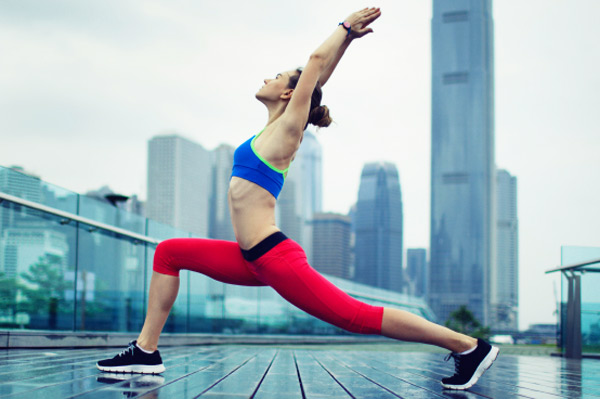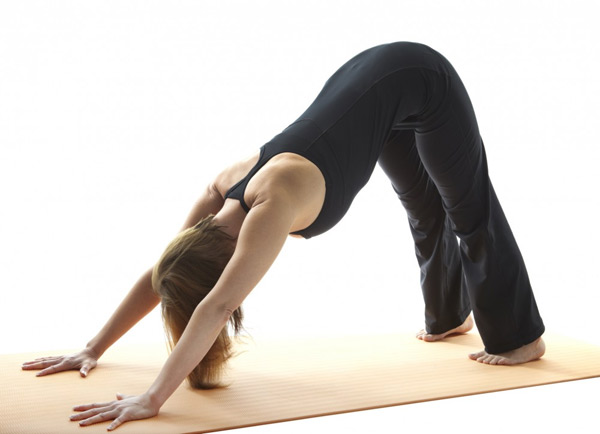
Yoga is no doubt, a safe and healthy way to improve muscle strength, endurance, flexibility and balance. The American Academy of Orthopaedic Surgeons (AAOS) supports yoga as a safe form of exercise as long as you do yoga based on your own individual flexibility and level. A recent review in the American Journal of Epidemiology of over 300 yoga studies concluded that yoga was just as safe as traditional care for health problems and other forms exercise.
It has been reported that less than one percent of people get injuries from yoga that cause them to stop doing yoga.
Some of the most common injuries in yoga are muscle or joint problems, though most problems are mild. Yoga can even be a safe and helpful form of exercise as long as you know how to modify postures with the help of your yoga teacher.
Tips to help keep your joints healthy and safe in yoga:
- Protect your Wrists: Beginners in yoga often bend their hands in Downward Facing Dog Pose, but this actually makes it more difficult on your hands and wrists. Make sure that your hands are spread wide and ground all corners of your palm on your mat. Your hands should be pressed down firmly enough that someone would not be able to pluck your fingers off the mat. Many poses in yoga, such as the Downward Facing Dog require a fair amount of wrist extension, while simultaneously putting direct pressure on the palm of the hand. This can exacerbate existing wrist problems, as well as pre-existing carpal tunnel syndrome. To help prevent this, make sure you press down evenly throughout the entire surface area of your hand in contact with your mat, so as to decrease the weight or pressure at any one point. This also makes it safer for your hands and wrists. Or, try modifying the pose by using your forearms instead (Dolphin Pose modification).

- Protect your Shoulders: Externally rotate your shoulders in Downward Facing Dog Pose to strengthen your external rotator cuff muscles. In Downward Facing Dog Pose, make sure your hands are shoulders width apart and that your elbows are not sticking out towards the sides– this places weight unevenly on the inner parts of your hand. Instead, externally rotate your shoulders so that your elbows creases face forward, which allows weight to be more evenly distributed between all your fingers on your hand. This also activates your external rotators of your shoulders to help strengthen your rotator cuff and helps prevent future rotator cuff injury. Release tension in your shoulders: Melt your shoulders away from your ears. Chronic tension can lead to your shoulders creeping up towards your ears. Check your shoulders in poses like Warrior I, Warrior II Pose or Upward Facing Dog Pose to make sure that your shoulders are not hunched or shrugged. Draw your shoulder blades down and towards each other to release tension in your shoulder and neck muscles.
- Protect your Elbows: Tuck your elbows in towards your ribs when lowering down from High Plank/ Push-Up to Low Plank/ Push-Up Pose. Don’t let your elbows buckle outwards. If this does not feel comfortable, try lowering your knees during Low Plank Pose to build your core strength and support your elbows. When you jump back from Standing Half Forward Bend to Low Plank Pose, make sure your elbows are bent when landing in order to lessen the impact on your elbow joint. Avoid landing on a fully extended elbow (i.e., don’t jump back and land in High Plank Pose).
- Protect your Knee: When your front knee is bent in standing poses like Warrior I, Warrior II, or High Crescent Lunge Pose, your knee should be vertically in line with your ankle so that it forms a 90 degree angle. It’s also very important that your knee is not leaning in toward your ankle. When your knee is in the valgus, or knock-kneed, position, then your or anterior cruciate ligament or ACL in your knee is more vulnerable and at risk of injury. If certain poses cause knee pain when your knee is pressing on the mat, use a rolled blanket or folded towel to cushion the knee, like in Low Lunge Pose. In positions like Tree Pose, avoid pressing directly on your knee with your other foot. Instead, place your foot along either your thigh or your shin rather than directly onto your knee.
- Protect your Hips: In hip-opener postures, support your hips with blocks and modifications, particularly if you have tight hips or prior hip injuries. In Lizard Pose, place blocks under your hands or forearms to help you avoid sinking too deeply into your hips. In Half Pigeon Pose, place blocks underneath the thigh of your back leg and your bottom/pelvis to support your hips if they are not able to reach the ground.In Reclined Bound Angle Pose, if your knees don’t reach the ground, add blocks (or cushions) beneath both bent knees in order to avoid straining your hips.
- Protect your Neck: Avoid flexing or extending your neck too far forwards or backwards. In many postures such as Mountain Pose, Triangle Pose, or Extended Side Angle Pose, keep your neck as a natural extension of your spine. Release neck tension by shaking your head “yes” and “no” in Standing Forward Bend. In postures like Cobra Pose or Upward Facing Dog Pose, do not overly extend your neck backwards. People often crank their neck too far backwards in these poses in order to try to achieve what they believe is the ideal curved shape of the pose. However, your gaze should actually be straight ahead–not at the ceiling– so that your neck is a natural extension of your spine so that your neck is not compressed. Other poses where your neck is flexed towards your chest, like Shoulder Stand Pose and Plow Pose, can be particularly hard on your neck. People with medical conditions like rheumatoid arthritis should avoid postures where your neck are flexed or extended away from the spine given the risk of neck instability. Support your neck with a rolled towel or blanket underneath your neck in shoulder stand. Or try modifying the posture by doing supported Shoulder Stand Pose with a block underneath your sacrum or Legs up the wall Pose. Both poses are inversions that keep your torso and neck supported on the mat in a neutral position.
- Protect your Jaw Joint: When you are in difficult yoga poses, notice if you are clenching your jaw tightly. Chronic stress can cause you to clench your jaw joint and lead to problems like teeth-grinding and pain in the jaw joint. Loosen your jaw by opening and letting it relax, or flutter your lips to make noise in forward folding poses like Standing Forward Bend or Wide-Legged Forward Bend. Most importantly, throughout your yoga practice, be compassionate to yourself and aware of your needs. If you feel pain, then stop, modify or skip the pose.
Finally, inform your yoga teacher ahead of time of any specific medical issues or pre-existing injuries. If you have specific joint injuries or medical problems that affect your joints, discuss doing yoga first with your physician and then work with your yoga teacher to tailor poses for your body.
Ref: